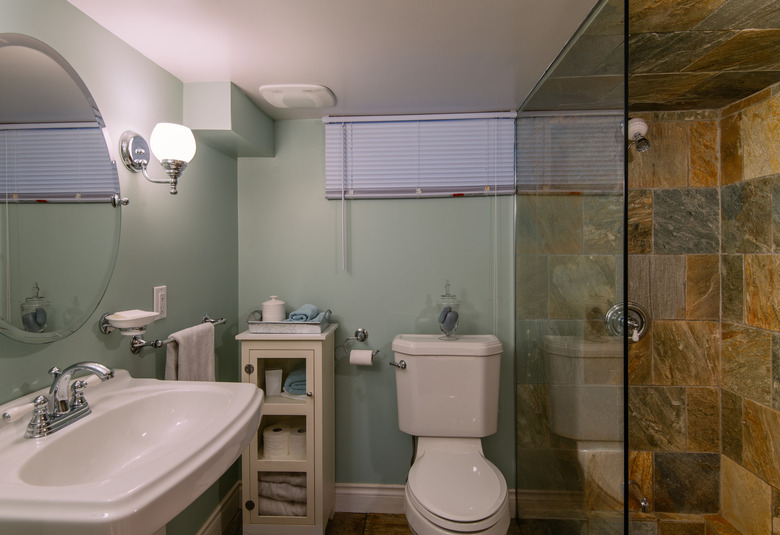4 Common Upflush Toilet Problems
We may receive a commission on purchases made from links.
You need an upflush toilet in any location that is below the sewer — which is most often a basement — because, as its name implies, an upflush toilet can flush waste upward. While you might think that's a recipe for disaster, most models accomplish the task time after time without a hitch owing to the macerator, which turns solids into slurry, or the electric pump that transfers the waste to the sewer via a 3/4- or 1-inch pipe. The discharge system is far different from that of a gravity-fed toilet and is the source of most upflush toilet problems.
But, as you can imagine, these types of toilets are not without their problems. Here are the most common problems with upflush toilets — and how to fix them.
1. The Macerator Is Stuck
1. The Macerator Is Stuck
The macerator is basically a rotating knife, and if you flush something it can't handle, it will get stuck. This can also happen to the pump, and if either isn't working properly, the toilet may keep flushing, and you won't be able to turn it off. You can remedy this situation by unplugging the toilet, lifting the tank lid and removing the obstruction with tongs. If the obstruction is on the pump, you'll have to remove it from the toilet to inspect and service it.
2. Debris Is Lodged
2. Debris Is Lodged
It's also possible for debris to get lodged in the discharge pipe, and when this happens, the pump operates continuously without emptying the tank. It may take a plumber to find the obstruction and clear it, but if the discharge pipes are exposed to freezing outside temperatures, the problem may be frozen pipes. If so, the system should operate normally when the temperature goes up.
3. Drains Experience Backup
3. Drains Experience Backup
When an upflush toilet serves as the drain for other bathroom fixtures and water backs out of the fixture drains, it means the pump isn't pumping or the pipes are blocked. Check the power outlet and circuit breakers first, because one of them may have tripped, then listen for strange sounds from the pump, which would indicate it needs servicing. You should also inspect the microswitch and membrane, which measure water level and tell the pump when to come on, for problems.
4. The Toilet Smells Bad
4. The Toilet Smells Bad
Scale develops in the tank over time, and because the tank always has a small amount of water in it, the minerals can mix with waste and cause a foul odor. Upflush toilets should be descaled periodically to prevent this issue. You should follow the manufacturer's instructions for descaling, but in most cases, you can do it by filling the tank with vinegar and allowing it to stand for a few hours before flushing it away.
